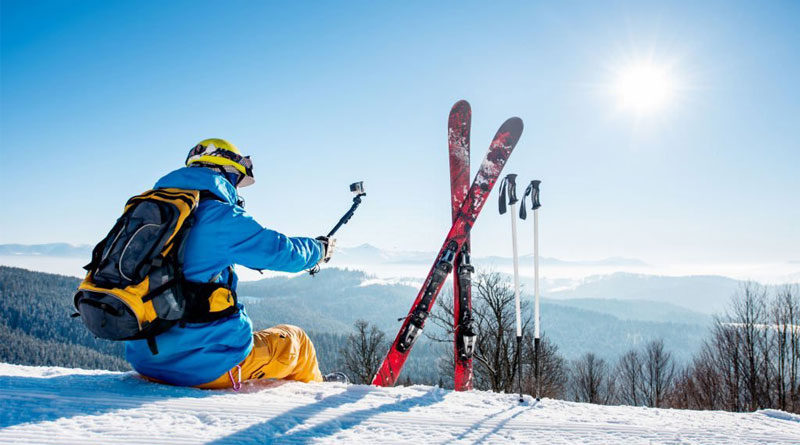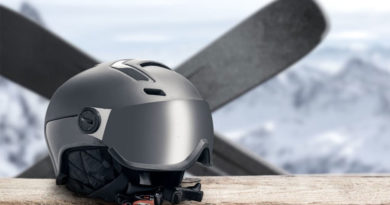Long vs. Short Skis: Which One Is Better?
The primary difference between shorts and long skis is that shorts have a smaller turning radius, are slower, and are designed for beginners. Long skis, on the other hand, have a larger turning radius and are faster. But they are more difficult to ski, particularly for beginners. Choosing the right ski length for you will largely depend on the terrain where you will be skiing. However, when standing up straight and holding the ski parallel to your body, a good rule of thumb for the proper ski length is between your chin and the top of your head. It works most of the time but it’s more than that. So keep reading to learn more about ski lengths.
Short Skis
As I stated previously, the main difference between long and short skis is that short skis have a much smaller turning radius. This allows you to make much smaller turns, something beginners will appreciate. So, shorter skis are a great option for beginners because they are easy to control. Also, aged skiers with low strength and fitness will benefit from shorter skis. You will also like the short skis if you are not an aggressive skier and like to ski at slower speeds. Finally, shorter skis are easier to handle while skiing moguls or choppy terrain.
However, making smaller turns are not always a good thing. That’s because it will be harder to make longer S-shaped turns and your turns will be much smaller at higher speeds. This can cause severe injuries if you lose control. So always wear a helmet while skiing. Secondly, because the energy you send to your legs has a short distance to travel and they respond quickly to your movement. That being said, shorter skis have these disadvantages. Thirdly, with shorter skis, you sacrifice a lot of stability because there is less contact between skis and the ground (snow). Finally, short skis don’t float well in powder compared to longer skis making skiing more challenging in powder snow.
Long Skis
Longer skis perform significantly better on powdery snow because there is a greater surface area in touch with the snow. They float a lot better than shorter skis. The longer length also means more contact with the ground, which makes skiing more stable at higher speeds. Longer skis typically have a larger turning radius, which lengthens the time it takes for the ski to turn in its natural arc. Even longer skis can be turned at speeds, although it takes them a little longer to swing around. This isn’t necessarily a bad thing; for stability and momentum, a longer S-shape turn is preferable in situations like deep powder. So, choose longer skis if you like to ski fast, and aggressively, or if you ski powder frequently.
Longer skis require more effort to turn because of their size and weight, which makes them less responsive than shorter skis. They also have a larger turning radius, which can make skiing steeper terrain very challenging for beginners. So, with these types of skis, you need a bit more strength to make turns. Longer skis may not be the greatest option for you if you want to ski on terrain that requires quick turns and maneuverability, such as treed runs and moguls, due to their longer turning radius. Learn more about ski turn radius here. They can be less enjoyable in terrain that calls for a lot of quick, sharp bends because they are slower to turn.
What ski size should you choose?
As I mentioned, ski length depends on a lot of factors such as your skill level, weight, terrain, etc. However, the below table will give you a very good starting point for ski length for the average size intermediate ability adult skier. If you are someone choosing skis for the first time, the below table might help you with that.
| SKIER HEIGHT (INCHES & FEET) | SKIER HEIGHT (CM) | SKI LENGTH (CM) |
|---|---|---|
| 4’6” – 4’7” | 137 – 140 | 120 – 124 |
| 4’8” – 4’9” | 142 – 145 | 125 – 129 |
| 4’10” – 4’11” | 147 – 150 | 130 – 134 |
| 5’0” – 5’1” | 152 – 155 | 135 – 139 |
| 5’2” – 5’3” | 157 – 160 | 140 – 144 |
| 5’4” – 5’5” | 162 – 165 | 145 – 149 |
| 5’6” – 5’7” | 167 – 170 | 150 – 154 |
| 5’8” – 5’9” | 172 – 175 | 155 – 159 |
| 5’10” – 5’11” | 177 – 180 | 160 – 164 |
| 6’0” – 6’1” | 182 – 185 | 165 – 169 |
| 6’2” – 6’3” | 187 – 190 | 170 – 174 |
| 6’4” – 6’5” | 192 – 195 | 175 – 179 |
| 6’6” – 6’7” | 197 – 200 | 180+ |
Conclusion
So in conclusion, shorter skis are lighter, slower, have a smaller turning radius, and are aimed toward beginner skiers. If you are a beginner or someone just getting into skiing, a shorter pair of skis can be a great option for you. Also, older skiers who want to go slower and don’t ski aggressively will benefit from the shorter length of skis. Longer skis, on the other hand, are designed for experienced skiers who like to ski faster. Longer skis also perform better in powdery snow because they provide better contact with the ground due to their longer lengths. However, both types of skis come with their own pros and cons. So, choosing the length of the skis should be a well-informed decision.




